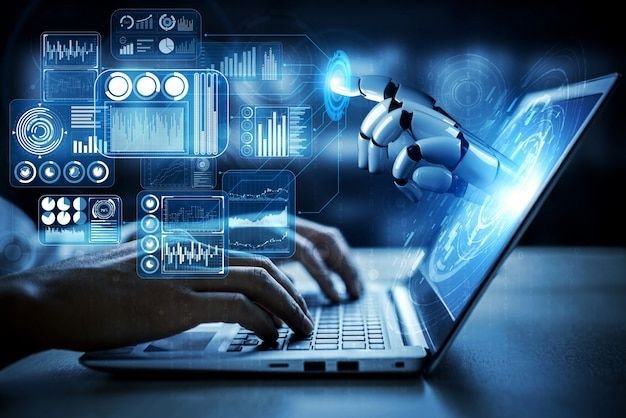
Real-time data processing and analytics have become essential in today’s fast-paced, data-driven world. They enable organizations to process and analyze data as it arrives, providing immediate insights and allowing for rapid decision-making. This article explores the concepts, applications, benefits, challenges, and future trends of real-time data processing and analytics.
Understanding Real-Time Data Processing and Analytics
Definition
Real-time data processing refers to the continuous input, processing, and output of data. This process happens almost instantaneously, allowing for the immediate analysis of data as it is generated. Real-time analytics involves extracting insights from data in real-time, enabling organizations to act on those insights without delay.
Components
– Data Ingestion: The process of collecting and importing data from various sources into a system for processing.
– Stream Processing: The method of processing data streams in real-time. This involves operations such as filtering, aggregating, and analyzing data as it arrives.
– Data Storage: Storing data in databases or data lakes that support real-time access and querying.
– Real-Time Analytics: Applying analytical techniques to real-time data to extract actionable insights.
Applications of Real-Time Data Processing and Analytics
Finance
– Fraud Detection: Identifying and preventing fraudulent activities in real-time by analyzing transaction data for unusual patterns.
– Algorithmic Trading: Using real-time data to execute trades based on pre-defined criteria, optimizing trading strategies and improving market performance.
– Risk Management: Continuously monitoring financial markets and assessing risks to make timely and informed decisions.
Healthcare
– Patient Monitoring: Analyzing real-time data from medical devices and wearables to monitor patient health and detect abnormalities.
– Telemedicine: Providing remote healthcare services and real-time consultations, improving patient access to care.
– Emergency Response: Leveraging real-time data to coordinate and optimize emergency response efforts.
E-commerce
– Personalized Recommendations: Using real-time data to provide personalized product recommendations based on user behavior and preferences.
– Dynamic Pricing: Adjusting prices in real-time based on demand, inventory levels, and competitor pricing.
– Customer Support: Analyzing real-time data from customer interactions to provide immediate support and improve customer satisfaction.
Manufacturing
– Predictive Maintenance: Monitoring equipment data in real-time to predict and prevent potential failures, reducing downtime and maintenance costs.
– Quality Control: Analyzing production data in real-time to ensure product quality and identify defects early.
– Supply Chain Optimization: Using real-time data to manage and optimize supply chain operations, improving efficiency and reducing costs.
Telecommunications
– Network Monitoring: Continuously monitoring network performance and detecting issues in real-time to ensure optimal service delivery.
– Customer Experience Management: Analyzing real-time data to improve customer experience by identifying and addressing service issues promptly.
– Usage Analytics: Monitoring real-time data usage patterns to optimize network resources and manage capacity.
Benefits of Real-Time Data Processing and Analytics
Immediate Insights
Real-time data processing and analytics provide immediate insights, allowing organizations to make informed decisions quickly. This capability is crucial in scenarios where timing is critical, such as financial trading, healthcare, and emergency response.
Enhanced Customer Experience
By analyzing real-time data, organizations can offer personalized experiences, respond to customer inquiries promptly, and address issues as they arise. This leads to improved customer satisfaction and loyalty.
Increased Operational Efficiency
Real-time data processing helps organizations optimize their operations by providing up-to-date information on system performance, resource utilization, and process efficiency. This enables proactive management and continuous improvement.
Competitive Advantage
Organizations that leverage real-time data processing and analytics can gain a competitive edge by being more agile, responsive, and data-driven. This capability allows them to capitalize on opportunities and mitigate risks more effectively.
Risk Mitigation
Real-time analytics enable organizations to detect and respond to risks promptly, reducing potential negative impacts. This is particularly important in sectors such as finance, healthcare, and security.
Challenges of Real-Time Data Processing and Analytics
Data Volume and Velocity
The sheer volume and velocity of data generated in real-time can be overwhelming. Managing and processing this data efficiently requires robust infrastructure and advanced technologies.
Integration Complexity
Integrating real-time data processing systems with existing IT infrastructure and legacy systems can be complex and challenging. Ensuring seamless data flow and compatibility is crucial for effective real-time analytics.
Data Quality and Consistency
Maintaining high data quality and consistency is essential for accurate real-time analytics. However, real-time data streams can often be noisy, incomplete, or inconsistent, requiring sophisticated data cleansing and validation techniques.
Security and Privacy
Real-time data processing involves handling sensitive information, making data security and privacy a significant concern. Implementing robust security measures to protect data from breaches and unauthorized access is critical.
Cost and Resource Requirements
Implementing and maintaining real-time data processing systems can be costly and resource-intensive. Organizations need to invest in advanced hardware, software, and skilled personnel to manage these systems effectively.
Future Trends in Real-Time Data Processing and Analytics
Edge Computing
Edge computing brings data processing closer to the source of data generation, reducing latency and enabling real-time analytics at the edge. This trend is particularly relevant for IoT applications and remote monitoring.
Artificial Intelligence and Machine Learning
Integrating AI and machine learning with real-time data processing will enhance the ability to analyze and interpret data in real-time. This includes advancements in real-time anomaly detection, predictive analytics, and decision-making.
Real-Time Data Lakes
Real-time data lakes will become more prevalent, allowing organizations to store and analyze real-time data alongside historical data. This integration enables more comprehensive and dynamic analytics.
Streaming Analytics Platforms
The development of advanced streaming analytics platforms will provide more powerful and user-friendly tools for real-time data processing. These platforms will offer improved scalability, flexibility, and ease of use.
Blockchain Integration
Blockchain technology can enhance the security and integrity of real-time data processing by providing a tamper-proof ledger for recording data transactions. This is particularly valuable in applications requiring high data integrity and trust.
Conclusion
Real-time data processing and analytics have the potential to transform various industries by providing immediate insights, enhancing customer experiences, and optimizing operations. While challenges exist, advancements in technology and methodologies continue to enhance the capabilities and potential of real-time analytics. As organizations increasingly rely on real-time data to drive decision-making, staying abreast of emerging trends and best practices will be crucial for leveraging the full benefits of real-time data processing and analytics.
ALSO READ: AI and Its Impact on Job Markets








